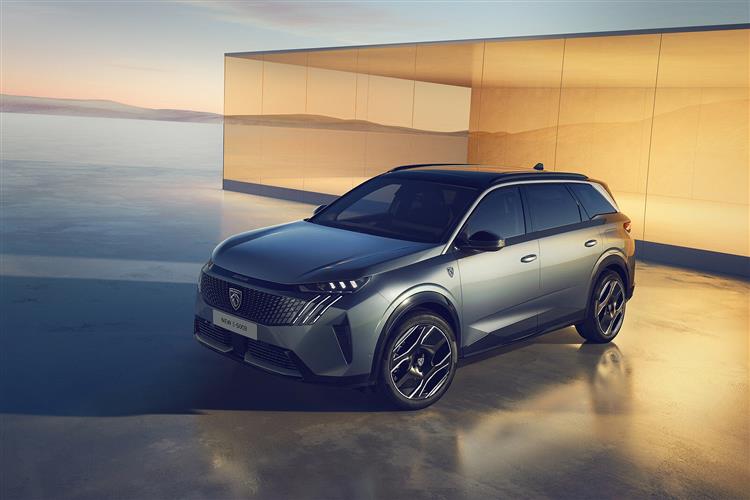A BETTER KIND OF 5008 (some text hidden) --NONE--
By Jonathan Crouch
Peugeot's third generation 5008 seven-seat SUV could be at its best with self-charging Hybrid power. Jonathan Crouch takes a look.
Ten Second Reviewword count: 44
Your perfect version of the third generation Peugeot 5008 might be this one, the Hybrid 136 e-DSC6. It's not possible to plug it in, but if you want this stylised Gallic seven-seat SUV, it makes more sense than any other powerplant in the range.
Backgroundword count: 145
Wait long enough and everything comes along at once. Take electrification in Peugeot's largest SUV, the seven-seat 5008, for instance. From 2017 to 2023, it was on sale here without the slightest hint of electric or Hybrid power beneath the bonnet, even though Peugeot had a PHEV system that might have been made to fit. As production of the second generation 5008 was coming to an end in late 2023 though, Peugeot introduced a non-plug-in 48V Hybrid variant. And continues with much the same engine as the entry-level unit for the third generation model we look at here. With this MK3 design, you can also have a PHEV and a full-electric 5008, but arguably this much more affordable non-plug-in 48V Hybrid model makes more sense. Is this lightly electrified seven-seat family SUV a good fit for the current market? That's what we look at here.
Driving Experienceword count: 214
As with its 308 and 408 showroom stablemates, the 5008 Hybrid 145 e-DSC6 uses this 48V Hybrid unit only in its faster 145hp form (smaller Peugeot models like the 208 supermini also get it in lesser 110hp guise). As ever with a full-Hybrid, you have to have an auto gearbox, though this is a rather different kind of self-shifting transmission - and not only because it's of the dual-clutch sort and restricted to six speeds. Built into its casing is a DC inverter, an Engine Control Unit and, most significantly, a little 22hp electric motor powered by a tiny battery secreted beneath the front passenger seat. On the move, this motor can work together with this Hybrid model's 1.2-litre petrol engine - or separately from it. And, unlike with a mild hybrid system like that fitted to say, a Volkswagen Tiguan, here the car can be driven for short urban distances (under 18mph) on electric power alone. During deceleration, the petrol engine stops and the e-motor acts as a generator to recharge the Hybrid system's 48V battery. The battery also stores the energy recuperated by the regenerative braking system. The motor additionally assists the engine under acceleration - such as from standstill to 62mph, which in 'Sport' mode takes 10.4s en route to 124mph.
To see the full road test text contact us on 0330 0020 227
Pictures (high res disabled)

.jpg)
|
.jpg)
|
Statistics (subset of data only)
Min |
Max |
|
Price: |
£40,470.00 (At 30 Oct 2025, Allure) |
£45,570.00 (At 30 Oct 2025, GT) |
Insurance group 1-50: |
23 |
24 |
CO2 (g/km): |
122 |
|
Max Speed (mph): |
123 |
|
0-62 mph (s): |
11.3 |
|
Combined Mpg: |
52.5 |
|
Length (mm): |
4971 |
|
Width (mm): |
1895 |
|
Height (mm): |
1893 |
|
... and 2 other stats available | ||
Scoring (subset of scores)
Category: Crossover or SUV 4x4s
| Performance | |
| Handling | |
| Comfort | |
| Space | |
| Styling, Build, Value, Equipment, Depreciation, Handling, Insurance and Total scores are available with our full data feed. | |



